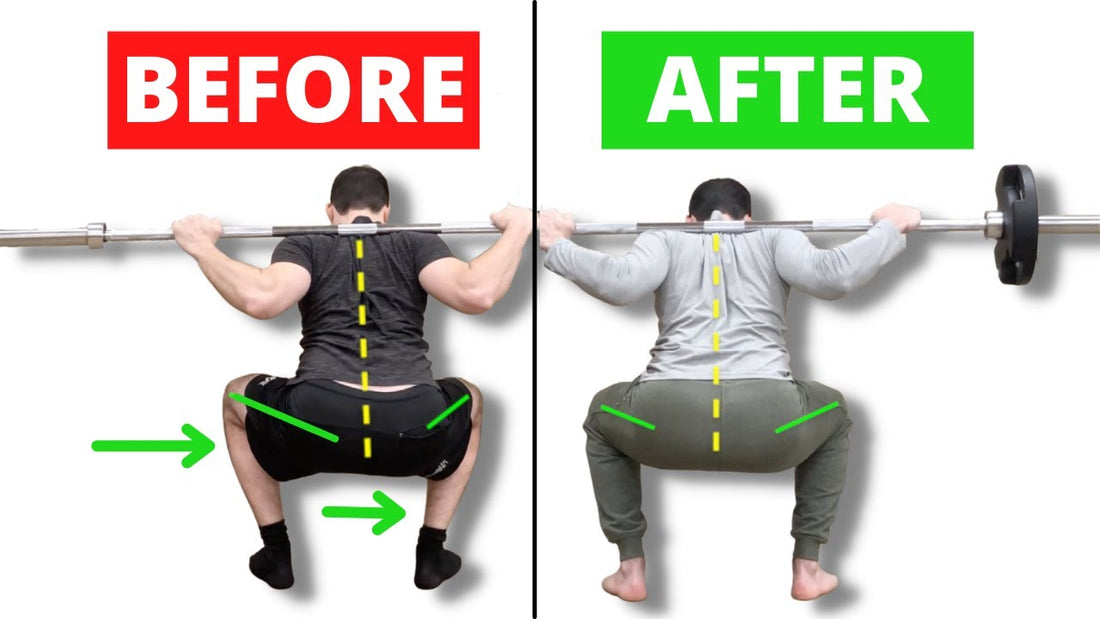
Dealing with Asymmetry: How to Fix a Hip Shift in Your Squat
You've seen it in your lifting videos: as you come out of the bottom of a heavy squat, your hips swing or "shift" to one side. This squat hip shift is an incredibly common issue, but it's also a red flag. It's a sign of an underlying asymmetry or weakness that, if left unaddressed, can lead to stalled progress and increase your risk of injury. This guide will help you diagnose the potential causes of your hip shift and provide strategies to fix it.

Why Does a Hip Shift Happen?
A hip shift is a compensation pattern. Your body is trying to complete the lift and will find the path of least resistance to do so. When your hips shift, you are unconsciously moving the load towards your stronger side to help lift the weight.
The most common root causes are:
- Strength Imbalance: A significant strength difference between your left and right glutes, quads, or adductors.
- Mobility Restriction: Limited mobility in one hip or ankle can force your body to shift away from the restriction to hit depth.
- Motor Control / Stability Issue: Your brain may simply have a faulty motor pattern, or you may lack the core stability to prevent the shift under load.
How to Diagnose the Cause
- Test Your Mobility: Perform single-leg and hip mobility tests. Do you have a noticeable difference in range of motion between your left and right side in a deep squat or during hip rotation? Our Mobility Guide has examples.
- Test Your Single-Leg Strength: Perform unilateral exercises like Bulgarian split squats or single-leg presses. Is one leg significantly weaker or less stable than the other?
- Squat with an Empty Bar: Does the shift disappear with very light weight? If so, it's more likely a strength or stability issue that only appears under heavy load. If it's still present with an empty bar, it may be a more ingrained motor pattern or mobility issue.
Drills and Strategies to Fix Your Hip Shift
Fixing a hip shift requires a targeted approach.
1. Hammer Unilateral Work: This is the most important step for fixing strength imbalances.
- Exercises: Bulgarian split squats, lunges, and single-leg leg presses.
- Execution: Always start with your weaker leg first. Over time, you can add an extra set or a few extra reps for the weaker side to help it catch up.
2. Improve Mobility:
- Hip Mobility: Focus on drills like the 90/90 hip switch to improve both internal and external rotation on your restricted side.
- Ankle Mobility: Work on ankle dorsiflexion if that is the limiting factor.
3. Re-groove the Motor Pattern:
- Tempo Squats: Use a slow, controlled eccentric (tempo training) with a light weight. This forces you to feel and correct the shift as it's happening.
- Paused Squats: A pause at the bottom forces you to find and hold a stable, symmetrical position.
The "Tripod Foot" Cue: As explained by experts at Squat University, focus on maintaining three points of contact with the floor (the base of your big toe, the base of your little toe, and your heel) on both feet. This can dramatically improve stability.
A squat hip shift is your body's way of telling you that something is out of balance. Don't ignore it. By taking the time to diagnose the root cause—whether it's a strength, mobility, or motor control issue—and applying a targeted strategy of unilateral work and corrective drills, you can build a more balanced, stable, and ultimately stronger squat.








